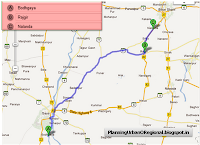Please visit my web page "Urban Tenets" at https://urbantenets.nl/
************************************************
A typical island, having a strong contained geographic and resource connotation, with a peculiarity of inside-outside, what is there and what in not, been there or not, whether to be disturbed or not
Close-knit native, historical and vernacular communities, having a symbiotic relationship with outside world
Embedded vulnerability due to delicate equilibrium of ecology, microclimate, demography and economy
Higher susceptibility to climate change effects, hazards, communication and supply chain blockage, energy shortage
Embodiment of contradictions – island’s opportunity is its threat, its remoteness is its attractiveness, its abundance is cause of its exhaustion, its beauty and tranquility are its curse, though a place of rejuvenation it also needs a period of uninterrupted rejuvenation
Our time-tested universal success models from planning to business to governance may still fall short of meeting the distinct needs, context and expectations of island geography, community and its biosphere
Changes we intend to do there and in surroundings might have a nonlinear impact and may me irreversible
Success here may mean different things to different stakeholders.
Author: Anoop Jha
#island #islandplanning #communityplanning #urbanplanning #islandmanagement #biodiversity #climatechange #travel #tourism #destination #Rotterdam #Netherlands #oceancommunities





.jpg)
















